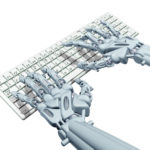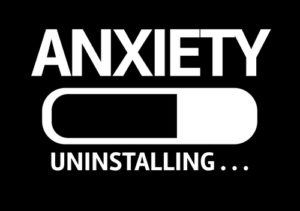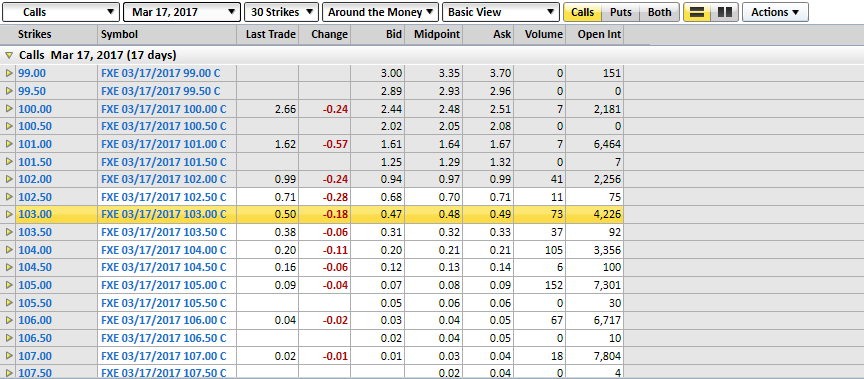 Even if you consider yourself a purely discretionary trader, you should still take some time to learn about automated trading strategies. Automated forex trading strategies provide the trader a systematic non-emotional way to approach the markets.
Even if you consider yourself a purely discretionary trader, you should still take some time to learn about automated trading strategies. Automated forex trading strategies provide the trader a systematic non-emotional way to approach the markets.
A system with an edge can provide for a hands off way for you to make money in the markets. Whether you are building your own automated forex trading system, or purchasing one from a vendor, understanding the nuances of automated trading algorithms is an important part of successful systems trading.
Auto forex trading systems are used by a range of investors including large volume institutional investors and small retail traders. An automated currency trading strategy is defined as one where the risk decisions are based on criteria programmed into automated trading software, that relays an initial entry order, and then manages the trade risk in real-time, eventually signaling a take profit or stop loss.
There are several benefits to using an automatic forex trading system. When you utilize currency trading algorithms, you are taking human emotions out of the trading process. Instead of spending time losing sleep over a trade, the fx algorithmic trading system takes over and follows defined rules that have been pre-programmed.
Who Can Create an Automated System?
Designing a forex auto trading system takes time and effort. There are several ways that you can become an automated algo trader and add a systematic approach to your trading. You can program the system yourself using your own strategies, you can have someone else program an automated system using strategies you have designed or you can purchase an automated system from a vendor that uses their trading logic.
Most self-coded trading systems are programmed in an automated trading platform that is geared toward generating a trading signal that combines entry criteria with risk management.
Automated trading systems are typically linked to a direct access broker, where the criteria that is used for decision making is coded in the platform’s proprietary language. These platforms have software that allows you to come up with ideas, back test them to see if they work, and execute them directly through a broker.
Some firms will hire a systems group that is dedicated to programming automated trading systems. Most of the time these groups will design internally all aspects of the trading system environment, and avoid adding software produced by an outside vendor. Trading firms often want proprietary systems and for this luxury, the costs will be elevated. Many of these software platforms use common coding languages such as C, or C++ or Python.
There are many vendors that provide trading strategy software to retail traders. The platforms will often have a graphical user interface which makes creating a rule based strategy relatively simple, often without the need for programming knowledge. You can point and click to generate an end to end trading strategy. Many trading platforms today have trading wizards which allow the trader to create a trading model that utilizes technical indicators to establish a predefined set of rules.
There can be a great deal of variables associated with executing an automated trading strategy. Typically, the criteria that is used is based on historical data points, allowing the designer to see if the strategy worked in the past. It’s important, however, for all system designers and traders to understand that past performance does not necessarily indicate future results.
Back testing provides you with the luxury of testing a strategy prior to risking real capital, which can reduce the probability of losses. You should be cognizant that when you find something that is too good to be true, you could have made an error in your back test process, used a small sample size, or simply could have over optimized the variables.
If you program the strategy on your own, you will have intricate knowledge of how the system works and whether your back-testing results are robust. You will also be familiar with the data that is being used to create these results.
The system that you design is only as good as the data that you use. If the data is faulty, you will have errors in your results. Bad quotes or prints, can generate false trading signals. You will also be able to spot returns that out of the ordinary, when you see a large gain or loss that are unexpected.
While having a hands-on approach can be beneficial, there are many of us that do not have the specific skills or desire to program a strategy, but still want to use an automated system. In this case, if you have a strategy that you want to trade, you can have a professional programmer code it for you.
Hiring a Programmer to Code your Trading Strategy
There are many skilled programmers that you can hire on a freelance basis that understand the nuance of specific trading platforms. You can work with these people, and have them show you the results of each data series that they run through your strategy. Some of the drawbacks include the additional cost you will incur from having someone else program your strategy. This would include the extensive trial and error process that you will need to go through in determining if your strategy has merit.
Purchasing a Trading System from a Vendor
Lastly, you can lease or purchase a trading strategy from a system vendor or developer. There are many trading systems that are advertised and if you plan on purchasing one of them, you should research the system thoroughly.
There are reviews of automated trading systems that you can find throughout the internet, which describe how specific automated trading systems have performed in the past. One such company that is reputable and has been around for a long time is Futures Truth Magazine. If you cannot find a review, make sure you test the system on a demo account before you employ the strategy using real capital.
When you purchase a vendor’s trading system, make sure their claims are in line with your goals. For example, if you are attempting to diversify your portfolio using an automated system as a trend following strategy, shy away from systems that refer to their strategies as mean reverting scalping systems.
One of the issues with back testing, and therefore purchasing a trading strategy that only shows historical results, is that there are techniques that can be used to make the strategy look good on paper but fail in real-time. By fitting the curve, or over optimizing, you can produce an automated trading system that looks very good over a specific historical period.
A system designer can slightly alter the criteria that is used to achieve outstanding performance. For example, a designer might back test a trend following strategy optimizing a moving average crossover system for a period of 2-years. Once they find the result that looks good, they test to see if the strategy works over a longer period. Most of the time, they will not find robust results over the long term, but will not tell you this when you purchase your system. For example, you could find out later that the moving average crossover strategy that returned 50% over the past 2-years, loses 30% when you test it over the past 10-years.
Traders sometimes assume that a trading plan should have are very high percentage of trades that are profitable and barely any drawdowns. With this in mind, an unscrupulous designer can create parameters that can be adjusted to create amazing results that completely fail as soon as the automated trading system is applied to a live market.
Systems Reduce Emotion
Once you activate your automated trading system, it will begin to look at specific price criteria to determine if the data meets the rules to initiate risk. When a transaction is traded, the system will then monitor your positions in real-time to determine if the risk criteria is met.
While human emotion is somewhat reduced when you employ an automated trading system, your emotions can still play a role. You need to give a new system the appropriate amount of time to determine if it works. Trading requires discipline, and even a system trader will question his system from time to time, so it is important to know how you will handle a losing streak. You should decide on this ahead of time, so you will avoid pulling the plug too early or too late if needed.
If you developed the system yourself, and back tested it, you might become attached to your strategy and fail to pull the plug on it even if it does not perform as planned. Make sure you stick to a game plan before employing an automated system, and have benchmarks that describe your goals.
Why Speed is Important
One of the most important elements of high frequency types of automated trading is the speed of the system related to completing a transaction. For example, statistical arbitrage is a type of automated trading were the speed at which you transact is critical to capture the arbitrage. Statistical arbitrage, is a strategy that attempts to capture miss-pricing on assets based on their expected value.
This strategy is relies on the law of large numbers, which means that you are more likely to be right if you look for the return of a security to approach the expected value on many trades as opposed to a few trades. So, if you perform arbitrage trades 100,000 times, you will have more predictable results than if you trade it ten times. High Frequency automated trading requires very fast execution, as the specific price you achieve is crucial to the success of the automated black box.
This process can be executed using forex, or with other securities such as stocks. A popular strategy is using current pairs or basket of currencies that generally trade in a tight range. When one currency in a pair outperforms the other, the poorer performing currency is purchased, as the strategy is looking for a mean reversion back to a historical mean value of the pair or basket.
In the currency trading environment markets are changing quickly. When trades are automated, you can respond to changing market conditions almost instantaneously. When you use an automated system, the system is always monitoring the market. The ability to get in and out of a trade at a rapid pace heavily favors a trader’s chances of success. Faster and more efficient trading, helps reduce slippage and helps reduce bid offer spreads.
When traders utilize program trading they can sometimes bypass the broker. For example, if you had access to a Reuters dealing system, you would eliminate your broker spreads. Although your broker is expected to be price agnostic, many brokers carry positions, and there will be periods were the are either more aggressive or less aggressive based on their inventory.
Technology plays a big role in automated trading. The systems which are used are not infallible. There are numerous instances where traders experience hardware or software failures. If, for example, the connection between the trading platform and the exchange fails, your trades might not be executed. When you are using an automated trading system, it needs to be monitored carefully and regularly. If the trades are not monitored consistently you could run into situations where trades stray from the original logic, or unintended orders are placed.
 Big Players and Proprietary Trading Code
Big Players and Proprietary Trading Code
Automated trading code, which is developed by High Frequency and other proprietary trading firms, is highly sensitive, and is an extremely valuable asset to the firm. No wonder since it can allow the company to generate significant revenue.
Renaissance Technologies is one of the most famous automated trading system hedge funds, and it has generated substantial yearly returns for investors.
In 2009, a programmer working at Goldman Sachs named Sergey Aleynikov stole Goldman’s propriety trading code. Aleynikov was convicted but the charges were reversed by a federal appeals court and his eight-year sentence was dropped. However, Goldman Sachs was relentless with the case and continued their pursuit of a conviction. Black boxes are often extremely valuable intellectual property since in many cases the opportunities that provide an edge will often disappear if others begin to copy the strategy.
Trading Algorithms Leave Foot Prints
Being aware of automated trading systems can help you determine where the smart money is trading. A discretionary trader can find changes in volume and open interest which often reflect where algorithms are transacting. While it is not easy to find volume and open interest in the OTC forex market, you can monitor futures and exchange traded funds along with options on futures and options on exchange traded funds to gauge significant shifts in volume and open interest.
Unusual volume is something that all discretionary traders should monitor. If you see blocks of unusual volume, you can try to determine if an algorithm transacted at that level. This concept is even more prevalent with options since they are leveraged at even greater levels. For example, each option contract on a currency ETF, is equivalent to one hundred shares of the underlying ETF.
Referring to the example below, you can see that for 70 cents you can purchase 1 contract of the FXE ETF at $102.50 which is the “at the money” price. This means that for $70 you can control 100 shares of the ETF worth $10,250. This is effective leverage of 146 to 1.

Summary
One of the biggest challenges for retail traders who utilize automated trading strategies is the ability of the trader to stick with the system during drawdown periods. If you ignore the criteria and stop out or take profit early, you are altering the return profile. It’s important to have realistic expectations, as no automated trading strategy will provide fool proof results.
You should look for a strategy that makes money with volatility that you are comfortable trading. Remember, the market pays you to take risk. The more you are willing to risk the larger the potential reward. If you cannot tolerate the swings that are predicted by your automated trading strategy, you should find one that conforms to your risk tolerance.
Of course there are pros and cons to automated trading. The biggest advantage for many people is that an automated system removes much of the emotion out of trading. If you can rely on the research that generated your strategy, and feel comfortable that your system will perform in real time like it does with historical data, then you will likely experience success. The most glaring disadvantage, is that if you are not careful, you may wind up developing or purchasing an over-optimized system that will not perform as intended in real time trading.
It takes discipline to trade an automated system in the proper manner. Someone must periodically be watching and monitoring the system. If you do not want to watch your system you might consider handing your money over to a money manager who trades an automated trading system. You may need to follow the trades and see if the returns are in line with your expectations.
Also bad quotes can be a nightmare for systems, which means you need to understand the data that is used to test your system. Speed is important in many instance and to gain an edge, institutional traders will use direct links with their exchanges, which provides them the fastest entry once their system provides a signal.
You need to make sure that a process is created that will allow you to be successful system trader. This should include all stages of the process including the design, testing and implementation of the system.